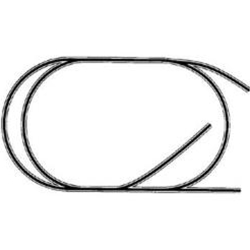kingnothing395
New Member
Hello all, I'm new to the forum and new to the hobby.
I have a question about turn outs. What size are they? If I have a basic oval-shaped track, and want to branch off one of the ends to a 2nd table, can I remove an 18" or 22" inch curved piece and replace it with a turnout and a short straight piece? Will it fit right?
Are the left- and right-hand switch tracks made by Life Like, Atlas, AHM, and others pretty much the same?
I have a question about turn outs. What size are they? If I have a basic oval-shaped track, and want to branch off one of the ends to a 2nd table, can I remove an 18" or 22" inch curved piece and replace it with a turnout and a short straight piece? Will it fit right?
Are the left- and right-hand switch tracks made by Life Like, Atlas, AHM, and others pretty much the same?

![IMG_1278[1].JPG](/forum/data/attachments/179/179316-4f123bb50e406075de63d6dc0c3bcdd9.jpg)

